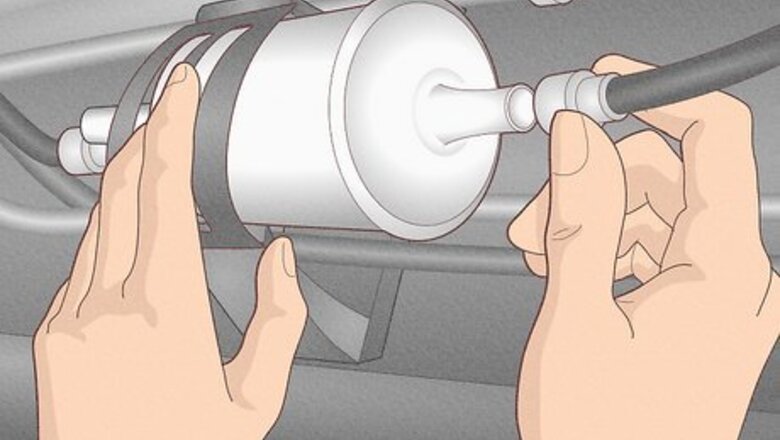
views
Checking the Fuel System
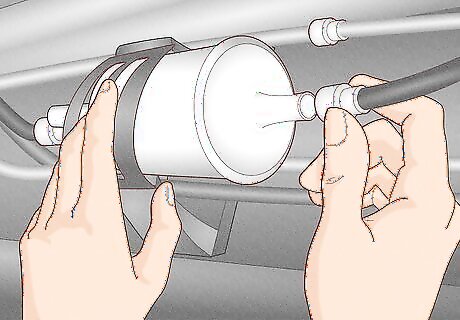
Replace the fuel filter if it’s clogged. Fuel filters are usually located near the back of the vehicle along the fuel line that runs from the gas tank to the engine. They often look like cylinders with a nozzle extending from the front and back. Fuel filters tend to get clogged over time, forcing the engine to stall. If your vehicle stalls and won’t start again, but then starts without issue after sitting for a few minutes, it may be a clogged fuel filter. Fuel filters usually need to be replaced every 40,000 miles or so, but because the filter is the easiest and least expensive problem to address, it’s often a good place to start. Remove the plastic clips holding the fuel lines to the front and back of the filter, then unscrew the bracket holding it in place. Install the new filter by connecting the fuel lines and inserting it into the bracket. Be sure to place a container below the fuel filter to catch any leaking fuel and be extremely careful when working with gasoline.

Check for cracks in the fuel line. There is a line that runs from the gas tank to the engine of the vehicle that allows gasoline to travel from where it’s stored to where it’s needed. If you’ve run anything over recently, the fuel line may be damaged, allowing fuel to leak out before it reaches the engine. If you’re leaking fuel, you’ll likely smell it too. Be extremely cautious when dealing with a leaking fuel line. Never drive a vehicle with a leaking fuel line. If the rupture line is rubber, simply remove the hose clamps on either end and replace that stretch of rubber line. If it’s a steel line, you may need a professional mechanic to repair the leak.
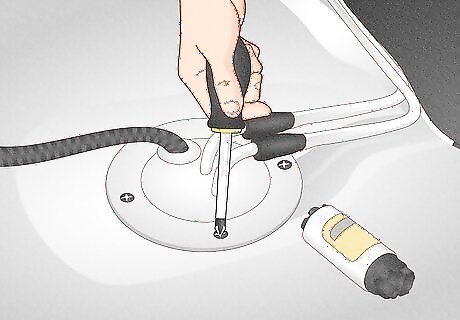
See if the fuel pump needs to be replaced. If the fuel filter doesn’t solve the stalling issue, the problem may be with your fuel pump. The fuse that powers it may need to be replaced, or you can connect a fuel pressure gauge to the test fitting on the engine’s fuel rail. Have a friend rev the engine and compare the readings on the gauge to the vehicle’s specifications provided by the manufacturer’s repair or owner’s manual. If the reading does not match your vehicle’s specifications, the fuel pump will need to be replaced. If the reading looks great, both the fuel pump and filter are working properly.
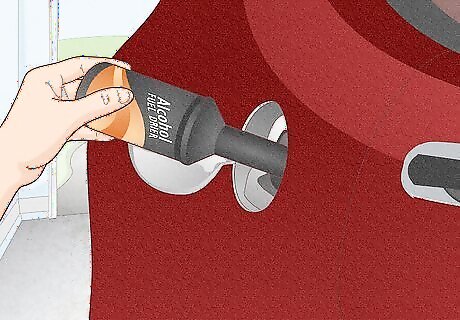
Eliminate any water in the fuel. If water has made its way into your fuel tank, it will pool at the bottom, which is where the fuel pump draws from. You can add a bottle of alcohol fuel drier to a full tank of gas to get rid of small amounts of water, but if there’s a great deal of water in your gas, the tank will need to drain the tank completely. If the car has sat for a while, condensation could have caused water to form inside the gas tank. Water in the gas can also result in inconsistent performance from the engine (causing sudden lurches or making it occasionally feel underpowered).
Fixing Air and Exhaust Problems
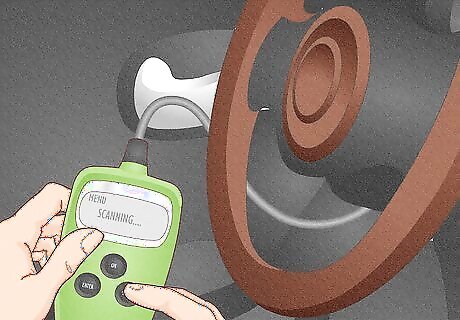
Use a code scanner to identify engine error codes. When your vehicle stalls, a check engine light usually lights up on the car’s dashboard. Locate the OBDII port under the car’s dash (an open plastic plug found beneath the steering wheel) and plug in a code scanner to read and identify the error codes that prompted the check engine light to come on. Most issues pertaining to fuel, air flow, or electricity will prompt a specific error code that will be a letter followed by numbers. If the scanner doesn’t give you the english description, you can find a list of codes and their corresponding descriptions in a vehicle specific repair manual. You can purchase a code scanner at many auto parts stores, though they may be able to scan your vehicle for free.
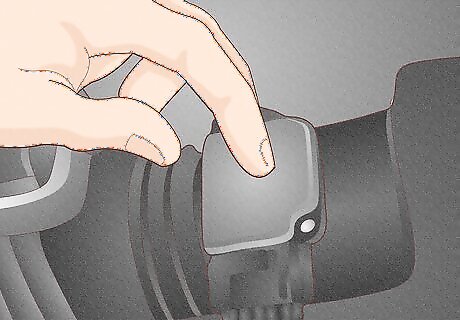
Locate the mass air flow sensor. Fuel injected vehicles use a mass air flow sensor to keep track of how much air is flowing into the engine. If the sensor gets clogged or goes bad, it can give the wrong information to the engine’s computer, causing it to stall. You can find the mass air flow sensor in most vehicles just after the air filter, at the end of the air intake. Most vehicles have an air box around the air filter with an accordion-like plastic tube leading up to it. The Mass air flow sensor is usually a plug secured to the airbox with two bolts with wires leading into it.
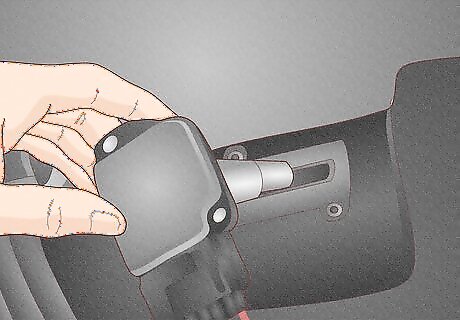
Check or replace the mass air flow sensor. Once you’ve located the mass air flow sensor, visually inspect it for signs of damage or clogging. If it’s been caked with dirt or debris, clean it out and see if the car stops stalling. If not, it may need to be replaced. Use the vehicle’s vin number, year, make and model information to purchase a replacement sensor if it is damaged.
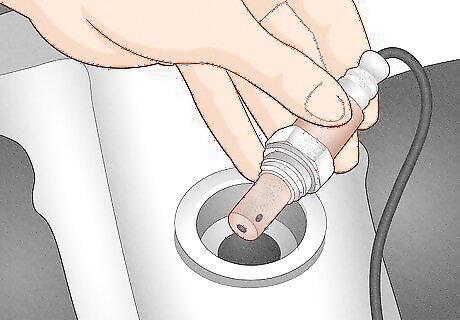
Replace the oxygen sensor on your exhaust. Like the Mass Air Flow sensor on your vehicle’s intake, the oxygen (or O2) sensor on your exhaust is also used to manage the air/fuel ratio employed by the engine’s computer to keep it running smoothly. If the O2 sensor is damaged, it will need to be replaced. Locate the oxygen sensor on the exhaust of the vehicle, (it will be the only component on the exhaust with wiring), unscrew and unplug it, then install the replacement. In some circumstances you may be able to simply clean the O2 sensor instead of replacing it.

Put in a new catalytic converter if it’s clogged. The catalytic converter is a part of the car’s exhaust system that filters out harmful elements before they escape through the muffler. If it gets clogged up, the engine will have to work harder to push the exhaust through and may be prone to stalling. A clogged catalytic converter will often prompt a specific OBDII error code to help you determine if it’s the problem. In some vehicles, you can just remove the bolts on the flanges of the catalytic converter and drop it out to replace it. In others, you may need to cut it out using a hacksaw. Install the new catalytic converter using exhaust clamps to prevent leaks.
Repairing Electrical Issues
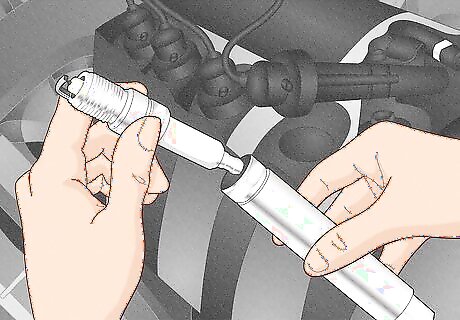
Swap out the spark plugs. Spark plugs are used to ignite the mixture of air and gasoline in the engine at the precise moment it’s been compressed by the cylinder. Old, worn out spark plugs may fail to fire, causing a misfire or even making the engine stall. Disconnect the plug wires and use a spark plug socket to remove the plugs and replace them. You may also consider replacing the spark plug wires. Be sure to reconnect the same spark plug wires to the same cylinders when done.

Check your battery connections. In order to run, your engine needs a constant supply of electricity provided by the alternator and battery. If one of the battery terminals is covered in grime or have come loose, the connection may not be consistent. When the power cuts out, the engine will shut off. Be sure the connections to the battery are tight and free from grime and dirt. Clean the terminals if need be. You may want to test the battery to be sure it’s not an issue.
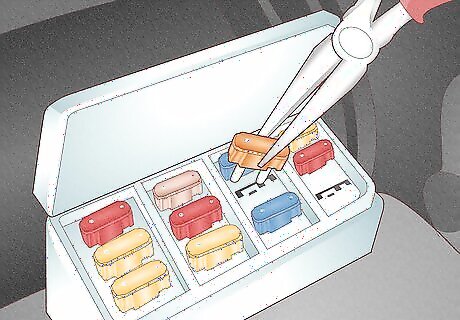
Disconnect your car alarm. Many car alarms come equipped with a function that will turn the engine off if it believes the vehicle is being stolen. If the alarm malfunctions, it may kill the motor even when the alarm isn’t engaged. You may be able to simply disconnect the alarm, but it may require specialized servicing from a dealership. Because many car alarms will render a car immobile if they’re disconnected, you may want to enlist the help of a professional to test and repair your car alarm. Car alarms can be extremely complicated to work on
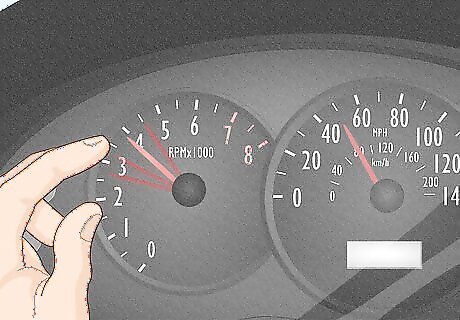
Compare engine RPMs with the idle control motor disconnected. Your vehicle’s idle control motor should keep the engine running at a consistent idle established by the manufacturer to limit emissions and improve fuel economy, but a broken one may cause the vehicle to when you take your foot off the gas. First, take note of the RPMs your engine idles at by looking at the tachometer, then use a vehicle-specific repair manual to find your idle control motor and disconnect it. If it idles at the same rate after you disconnected the idle control motor, that means it was never working at all. If it wasn’t working, it will need to be replaced.


















Comments
0 comment